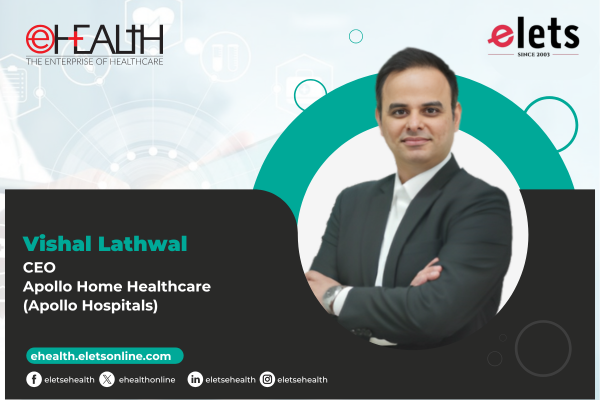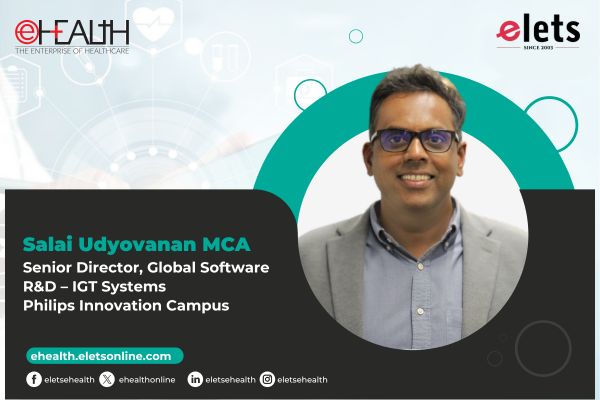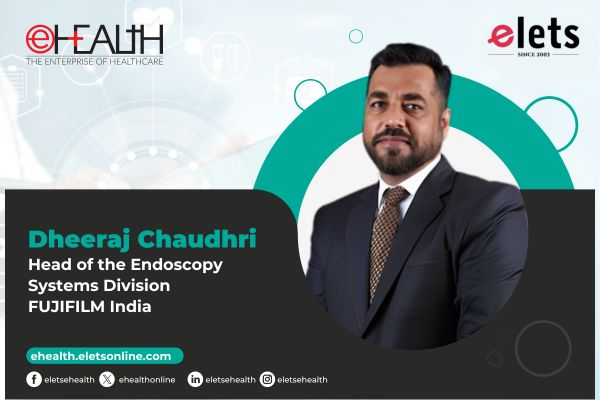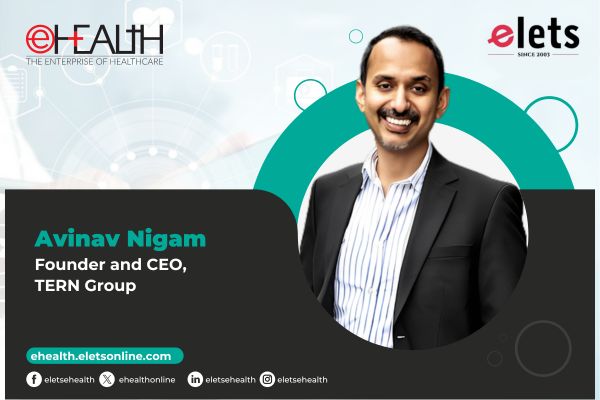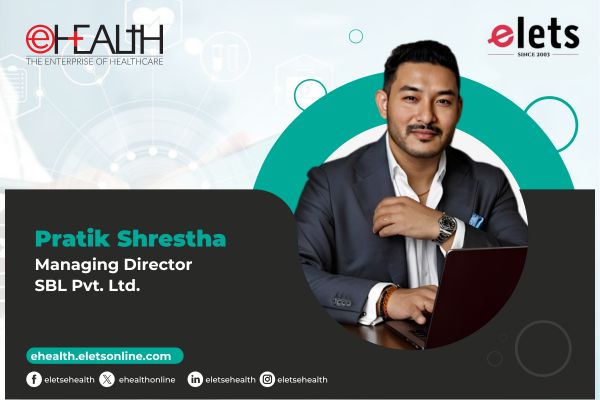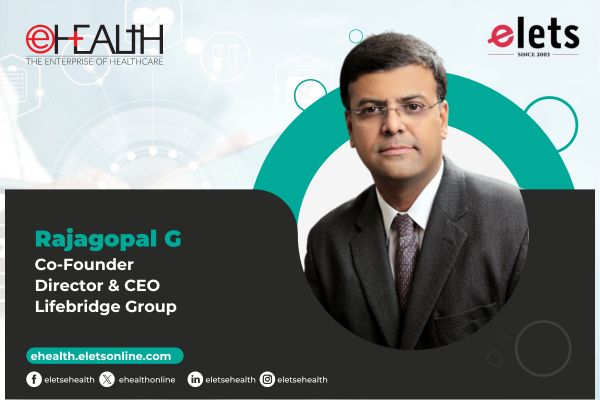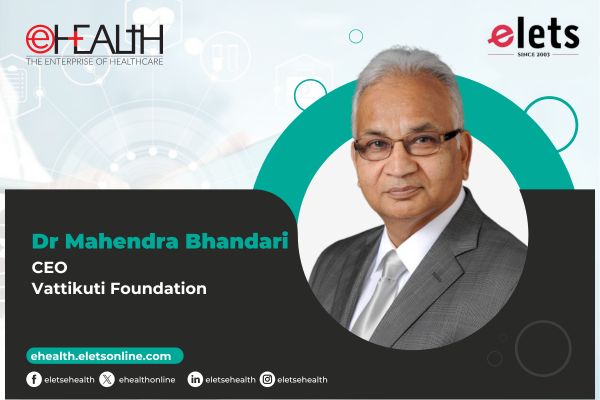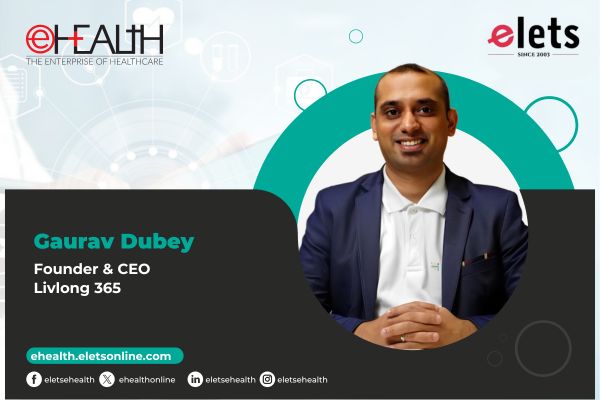
Conversational AI technologies like voice assistants and chatbots have immense possibilities for improving patient experience and engagement in the healthcare industry. These innovative tools leverage natural language processing and Machine Learning (ML) to simulate human-like conversations, enabling patients to interact with healthcare systems and services more intuitively and personally shared Bhagwat Dhingra, MD & Founder, Medisage with Kaanchi Chawla of Elets News Network (ENN). Edited excerpts:
Virtual Reality (VR) and Augmented Reality (AR) technologies have been making their way into healthcare. Can you share facts about any fascinating use cases, potential VR/AR in-patient treatment, or medical education applications?

Technologies such as Virtual Reality (VR) and Augmented Reality (AR) have, indeed, been revolutionizing the healthcare industry, offering numerous fascinating use cases and potential applications in both in-patient treatment and medical education. These technologies hold immense promise in enhancing patient care, improving medical training, and bringing in a sea change in the entire healthcare experience.

One fascinating use case of VR/AR in-patient treatment is the application of immersive environments for pain management and psychological therapy. VR has shown plenty of possibilities for alleviating pain and anxiety in patients by creating immersive and distraction-based experiences. For instance, VR can transport patients to calming and visually stimulating environments such as a serene beach or a peaceful garden, effectively diverting their attention from discomfort or distress. Besides, AR can be utilized during medical procedures to overlay real-time information, such as a patient’s vital signs or anatomical structures, onto the surgeon’s field of view, helping with accurate interventions and reducing the risk of errors.

Another potential application of VR/AR in healthcare is telemedicine. Healthcare providers can conduct remote patient consultations by leveraging these technologies, providing an in-depth and interactive experience. VR/AR can enable physicians to examine patients virtually, review medical records, and perform diagnostic tests remotely. This can greatly improve access to healthcare services, particularly for individuals in remote areas or those with limited mobility.
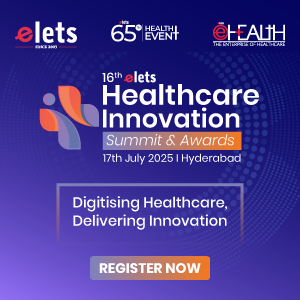
VR/AR in healthcare holds vast potential. These technologies offer innovative solutions for pain management, psychological therapy, medical education, and telemedicine. As the field continues to evolve, we expect to witness even more fascinating use cases that redefine how healthcare is delivered, ultimately leading to improved patient outcomes and enhanced medical training.
Precision medicine is often associated with genetic testing. But what other factors or data sources are increasingly considered for personalized treatment plans?
While genetic testing plays a significant role in precision medicine, it is important to note that personalized treatment plans now encompass a broader range of factors and data sources. Precision medicine aims at tailoring medical decisions and treatments to individual patients based on their unique characteristics—including genetics. It also extends to other important factors contributing to an individual’s health and response to treatment. Here are some additional factors and data sources that are increasingly considered for personalized treatment plans.
- Clinical & Medical History: Understanding a patient’s medical history, including previous diagnoses, treatment, and responses, is crucial for personalized treatment. This information provides valuable insights into the patient’s specific health condition and how they have evolved over time.
- Biomarkers & Molecular Profiling: Beyond genetic testing, precision medicine incorporates biomarkers and molecular profiling to evaluate specific molecular characteristics of diseases and may provide valuable information for personalized treatment plans. This may involve analyzing proteins, metabolites, or other molecules to better understand a patient’s disease and identify potential targets for personalized therapies.
- Imaging & Diagnostic Tests: Advanced imaging techniques, such as magnetic resonance imaging (MRI), computed tomography (CT), or positron emission tomography (PET), provide valuable visual information about a patient’s anatomy, physiology, and disease progression. Diagnostic tests, such as blood tests or biopsies, also contribute to personalized treatment plans by providing specific information about a patient’s condition.
- Patient-reported Outcomes (PROs): PROs are assessments that capture information directly from patients about their symptoms, functional status, quality of life, and treatment preferences. Incorporating patient-reported data helps tailor treatment plans to individual needs and preferences.
With the growing popularity of voice assistants and chatbots, how can conversational AI technologies enhance patient experiences and engagement?
Conversational AI technologies like voice assistants and chatbots have immense possibilities for improving patient experience and engagement in the healthcare industry. These innovative tools leverage natural language processing and Machine Learning (ML) to simulate human-like conversations, enabling patients to interact with healthcare systems and services more intuitively and personally. Here are some ways conversational AI can benefit patient experience and engagement…
- Improved Accessibility and Convenience: Conversational AI technologies provide patients with convenient access to healthcare information and services anytime, anywhere. Patients can ask questions, schedule appointments, request prescription refills, or receive general health guidance without phone calls or in-person visits through voice assistants or chatbots.
- Personalized Health Support: Conversational AI can offer personalized health support by collecting and analyzing patient data. Moreover, by combining electronic health records and other relevant sources, these technologies can provide tailored recommendations, reminders, and educational content based on a patient’s medical history, current condition, and preferences.
- Quick & Accurate Triage: Chatbots equipped with medical knowledge and decision-making algorithms can assist in triaging patients based on their reported symptoms. Patients can describe their symptoms or concerns, and the chatbot can ask relevant follow-up questions to assess the urgency and severity of the situation. This helps healthcare providers prioritize patients, providing timely care to those who need it most while reducing unnecessary visits to emergency departments or clinics.
- Patient Education & Health Literacy: Conversational AI technologies can deliver valuable health information and education to patients in a conversational and easily understandable manner. Voice assistants or chatbots can answer medical questions, explain treatment options, or educate patients on preventive measures. This improves health literacy and empowers patients to make informed decisions about their care.
One of the challenges in healthcare is the interoperability of different systems and technologies. How do you envision the future of interoperability? What efforts are being made to address this issue?
In pursuing improved healthcare data quality and collaboration, healthcare providers acknowledge the need for interoperability. However, a recent survey conducted by the Center for Connected Medicine reveals that less than 40% of providers in the US have achieved a level of interoperability that enables them to share health data with other organizations.
The gap between the desired outcome and current success rates can be attributed to many challenges that providers face on their journey toward interoperability. These challenges are hindering the seamless exchange of healthcare information. Here are some of the key hurdles:
- Dealing with Different Standards: Interoperability requires a coordinated effort, with standards playing a pivotal role. However, the vast array of different standards poses a significant obstacle. Establishing consistent practices across clinics becomes daunting when each standard dictates distinct rules for information exchange. Instead of streamlining processes, the multitude of standards often complicates implementation.
- Managing a Flood of Data: Efficiently handling the flow of health data between systems is critical. Yet, this task is far from simple. Healthcare interoperability involves integrating electronic health records (EHRs)/electronic medical records (EMRs), data from Internet of Things (IoT) sources, internal hospital systems, and more. Failing to manage these diverse data sources simultaneously can disrupt workflows. Investing in data integration tools and healthcare analytics solutions becomes essential to mitigate this challenge.
- Ambiguity in Data Exchange Practices: Information blocking, where providers impose fees on accessing health data, poses a formidable obstacle to interoperability. Some insurance companies also refuse to share health data, restricting access to patients’ previous treatments. This lack of transparency and cooperation hampers the ideal scenario of accessing comprehensive patient information, hindering the progress of interoperability in healthcare.
- Scarcity of Skills and Resources: Achieving interoperability necessitates collaboration among clinicians, insurers, and government agencies. However, financial constraints limit the capacity of many medical settings to implement necessary changes. The initial investments required for interoperability exceed the budgets of numerous clinics, despite the potential for long-term cost savings. Additionally, insufficient training impedes the smooth transition to interoperable systems. Investing in upskilling healthcare staff at all levels becomes imperative to streamline workflows and maximize the benefits of interoperability.
Overcoming these challenges requires a collective commitment from the healthcare community, technology providers, and policymakers. Efforts to standardize practices, enhance transparency, and target investments in training and resources are pivotal in realizing the promise of seamless interoperability.
As the population ages, what role can robotics and automation play in supporting elderly care and improving the quality of life for seniors?
As the global population ages rapidly, the integration of robotics and automation in elderly care offers immense potential to enhance the lives of seniors. These innovative technologies are revolutionizing how we provide care and support to older adults, addressing the unique challenges associated with aging.
Robots and automation have multiple roles in supporting elderly care, transforming the caregiving landscape in the following ways:
- Assisting with Daily Activities: Robots equipped with advanced sensors and artificial intelligence can help seniors with daily tasks, such as mobility, transfers, and personal hygiene. By providing physical assistance, these robots reduce the workload on caregivers and promote independence among seniors.
- Managing Medications: Medication adherence is crucial for senior healthcare. Robots can be programmed to dispense medications on time, send reminders, and monitor adherence. Automating medication management helps prevent errors, ensures proper dosages, and improves overall health outcomes for seniors.
- Preventing Falls and Ensuring Safety: Falls are a major concern for seniors, often leading to severe injuries and hospitalizations. Robotic systems can monitor the environment, identify potential fall risks, and alert caregivers or emergency services as needed. Additionally, exoskeletons and wearable devices can assist with balance and gait, reducing the risk of falls and enhancing mobility.
- Enhancing Social Interaction and Companionship: Loneliness and social isolation greatly affect seniors’ mental and emotional well-being. Socially assistive robots are designed to engage in conversation, provide companionship, and stimulate cognitive functions. These robots alleviate loneliness, improve mental acuity, and foster emotional connections among seniors.
- Remote Monitoring and Telehealth: Robotics and automation enable remote monitoring of vital signs, allowing healthcare providers to assess the health status of seniors from a distance. Telehealth platforms facilitate virtual consultations and remote healthcare services, eliminating the need for frequent in-person visits. This improves healthcare accessibility, particularly for seniors in rural or underserved areas.
Integrating robotics and automation in elderly care is a collaborative effort involving healthcare professionals, researchers, and technology developers. By harnessing these advancements, we can create a future where seniors receive personalized, efficient, and compassionate care while alleviating the strain on caregivers and healthcare systems.
Be a part of Elets Collaborative Initiatives. Join Us for Upcoming Events and explore business opportunities. Like us on Facebook , connect with us on LinkedIn and follow us on Twitter , Instagram.
"Exciting news! Elets technomedia is now on WhatsApp Channels Subscribe today by clicking the link and stay updated with the latest insights!" Click here!






